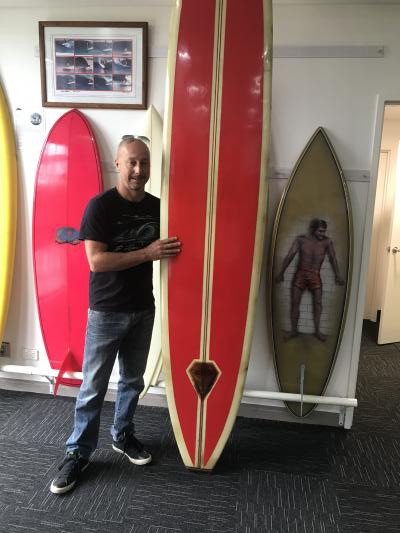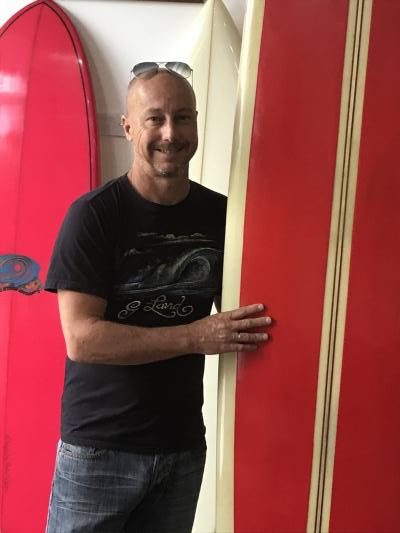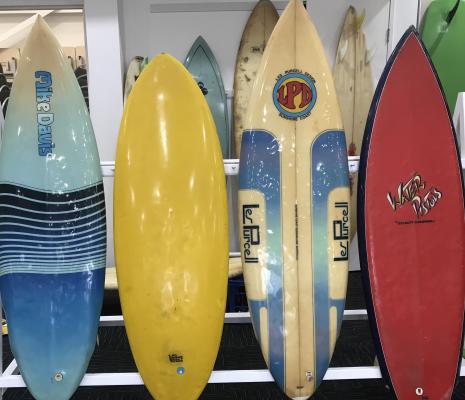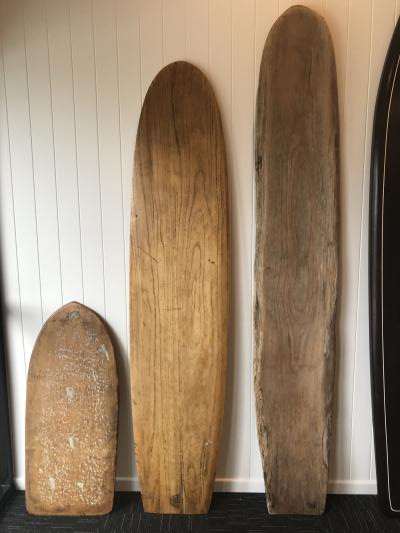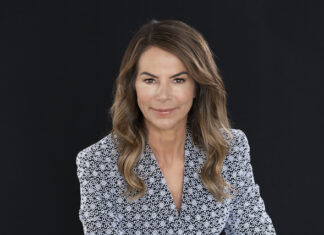For Keith Grisman, the man behind Noosa’s first surfing museum, the light bulb moment came when he visited the home of a well-known surfboard collector.
“He took me down to a climate-controlled room under the house where the most collectible surfboards you’d ever wish to see were locked away inside board bags where no one ever saw them,” Keith told Noosa Today. “So as wonderful as it was to see them, I left feeling a bit hollow. I decided then and there to put mine on display. Of course, no museums make money, least of all surf museums, but maybe a combination of the uses of the space can make this one work.”
A cursory glance at Keith Grisman’s business history suggests that if anyone can make it work, he can. The entrepreneur and investor put together an amazing portfolio in his early days, only to lose it during the Global Financial Crisis, then bounce back with new vitality. He says surfing got him through his dark times, but to keep his mind off the plunging markets, he also started a surfboard collection. (“I could just about afford the $25 garage sale boards”, he says.)
In just over a decade that collection has grown to more than 800 historic surfboards housed in museums at Mooloolaba, Caloundra and Nambour, and now in his most ambitious museum project yet, at the former convention centre at Noosa Lakes Resort.
A man with an analytical mind but a practical way of getting things done, Keith is “soft opening” the Noosa Surf Museum in time for next week’s surf festival, in line with his website theory. “If you set out to design the perfect website, you’ll never finish it,” he says. “It’s better to just open it and work things out organically. Or, as Walt Disney used to say of his theme parks, you open them and keep ‘plus-ing’ them.”
The pluses at the surf museum, which are still to be formalised with Council, are planned to include re-opening the restaurant and bar downstairs with an up-dated ‘Noosa-cool’ offering, adding a coffee shop and Surf Museum shop at the entry, while continuing to offer conference, function and meeting rooms upstairs with a small number of offices around the edges of the vast museum space. Keith says he wants it to become a community space, and to that end the Noosa World Surfing Reserve will have a permanent meeting venue as of this week.
Although he’d been a keen surfer all his life, Keith says he found that he knew very little about surfboard design until he started his collection with a prized “Lazer Zap”, the design popularised by Australian champion Cheyne Horan 40 years ago. “Perhaps because of the way I started, I thought it would be all about the stars who rode the boards and the star shapers, but in fact that’s probably the bit that interests me the least. It’s all about the board, its shape and the people who came up with the design ideas behind it, and often they’re people who have been overlooked, so it’s fascinating to do the research.”
The nearly 300 surfboards that will call Noosa home (the full 800 will rotate around the three museums) include staples such as the solid wood and veneer-panelled boards of more than a century ago, but also many lesser known examples of Sunshine Coast surfboard history. Noosa Today asked Keith to pull out a few examples and tell us their stories.
BOB MCTAVISH HAYDEN LOG
If there’s a more iconic Noosa board design than this, I’ve yet to see it. I got it from a lady who said her dad had passed away and had left some old boards. This was one of them. It was covered in baby blue and white gel coat. (Surfboard restorer) Tony Dragan sanded it off and found that under the cover coat, the board was in amazing condition. The original pin lines were still intact, and we found McTavish’s signature two-dot numbering which dates it to 1964. Looking at the D fin off the tail, I’d say that date would be right, and make it from McTavish’s very early days at the Hayden factory at Alexandra Headland. It’s got pretty refined rails for the time.
MIKE DAVIS TWO PLUS ONE CHANNEL BOTTOM
This would be a good decade before Mike made the move from Kiama to Noosa, so early ‘80s. When you look at the plan shape it’s for a single fin, and it looks a lot like the Simon Anderson Energy single fins immediately before the development of the thruster. I really like the double flyers on this one. There’s a lot going on here, other than a cool spray. Like the advanced channels and a no-nose. And I like the way Mike writes the dimensions on the stringer in perfect tech drawing script.
BILL WALLACE STRINGERLESS
Bill Wallace. This is an original coloured shortboard from the early years of the shortboard revolution, so probably around 1970. It’s possibly one of his five foot three Junior Models, which were among the last boards Bill produced at Brookvale before moving his factory to Hastings Street, Noosa in 1973. They were called “popouts” and sold for only $50, but in fact they were hand-shaped and looked a bit like what the Aussies were riding at the 1970 world titles.
LES PURCELL TWO PLUS ONE
From about 1985, with a rounded pin plan shape like a single fin. Les is a bit of an unknown of Sunnie Coast surfboard history, probably because he was overshadowed by the cool factor. He started shaping for Woolsley in Brisbane in the late 1960s, then went south to Atlas Surfboards in Melbourne and John Arnold in Adelaide. When he returned to Queensland he shaped with Greg Clough in Caloundra before going out on his own at Alex in 1973.
STU CAMPBELL WATER PISTOL
The Water Pistol came from South Australia, from a guy who lived here until about 30 years ago and took it with him but never used it, so it hasn’t seen water for a long time. We get a lot of boards like that actually, that don’t get used for decades and get pulled out from under tarps in backyard sheds. Stu moved here from Hot Buttered in Sydney in 1983 so this might have been one of his first Water Pistols. The plan shape is more the proper thruster, but it’s a textured deck, swallow tail twinnie.
For information about visits to the Noosa Surf Museum, phone 5475 0285.

